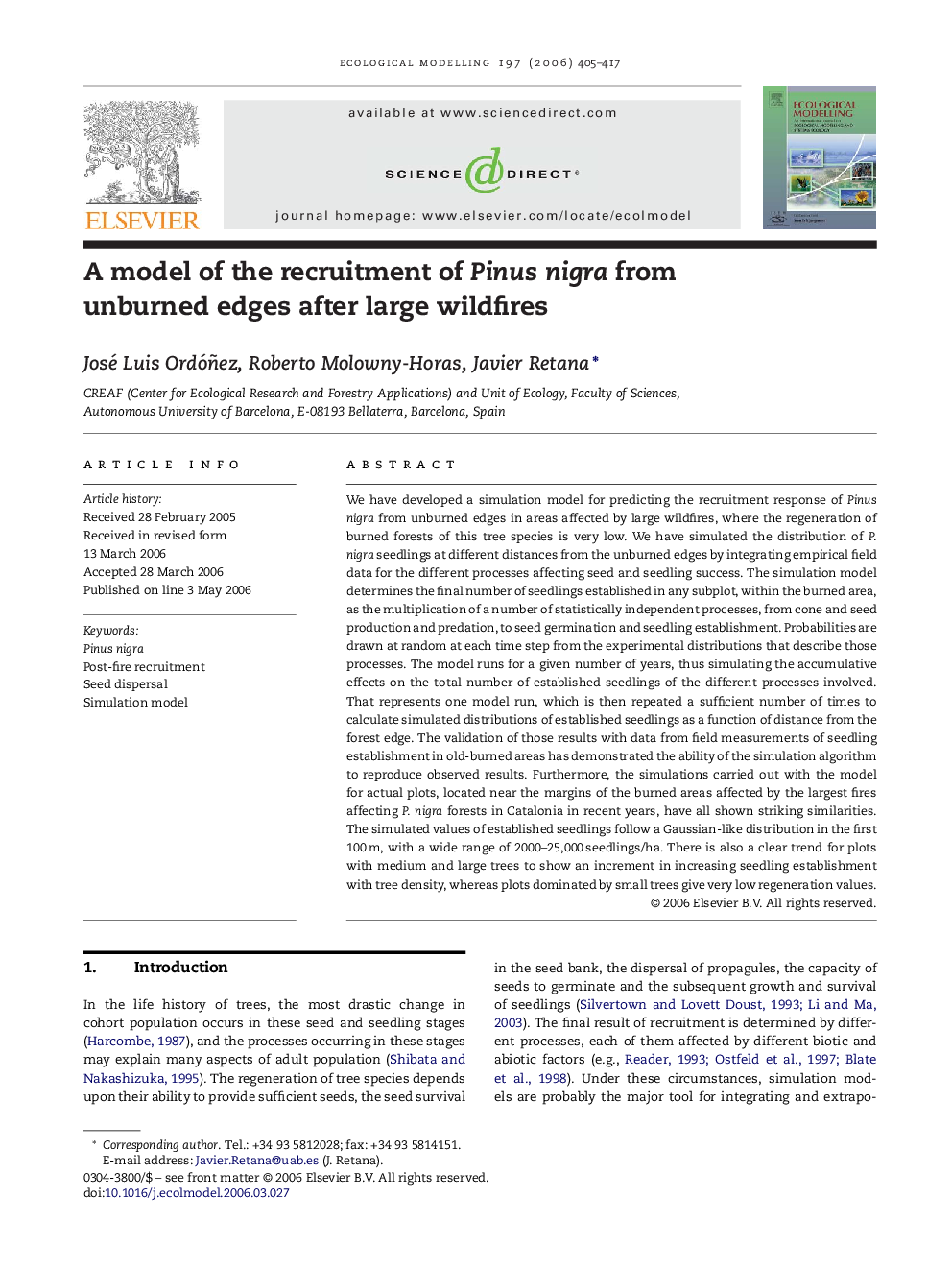| Article ID | Journal | Published Year | Pages | File Type |
|---|---|---|---|---|
| 4379220 | Ecological Modelling | 2006 | 13 Pages |
Abstract
We have developed a simulation model for predicting the recruitment response of Pinus nigra from unburned edges in areas affected by large wildfires, where the regeneration of burned forests of this tree species is very low. We have simulated the distribution of P. nigra seedlings at different distances from the unburned edges by integrating empirical field data for the different processes affecting seed and seedling success. The simulation model determines the final number of seedlings established in any subplot, within the burned area, as the multiplication of a number of statistically independent processes, from cone and seed production and predation, to seed germination and seedling establishment. Probabilities are drawn at random at each time step from the experimental distributions that describe those processes. The model runs for a given number of years, thus simulating the accumulative effects on the total number of established seedlings of the different processes involved. That represents one model run, which is then repeated a sufficient number of times to calculate simulated distributions of established seedlings as a function of distance from the forest edge. The validation of those results with data from field measurements of seedling establishment in old-burned areas has demonstrated the ability of the simulation algorithm to reproduce observed results. Furthermore, the simulations carried out with the model for actual plots, located near the margins of the burned areas affected by the largest fires affecting P. nigra forests in Catalonia in recent years, have all shown striking similarities. The simulated values of established seedlings follow a Gaussian-like distribution in the first 100Â m, with a wide range of 2000-25,000Â seedlings/ha. There is also a clear trend for plots with medium and large trees to show an increment in increasing seedling establishment with tree density, whereas plots dominated by small trees give very low regeneration values.
Related Topics
Life Sciences
Agricultural and Biological Sciences
Ecology, Evolution, Behavior and Systematics
Authors
José Luis Ordóñez, Roberto Molowny-Horas, Javier Retana,
